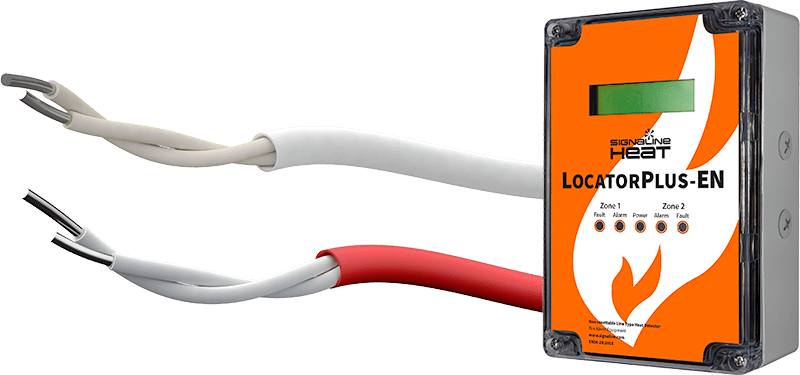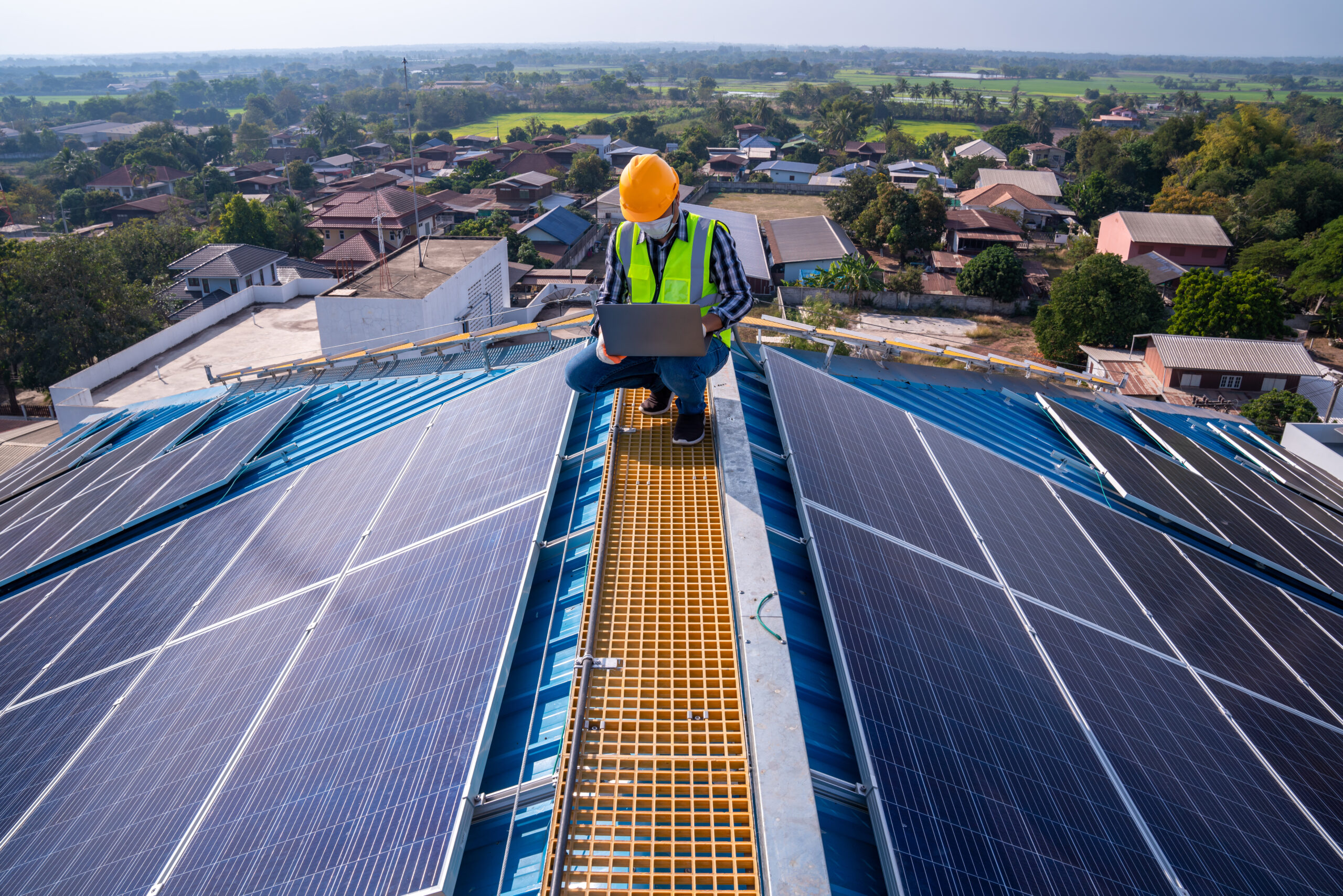Key Highlights
- Signaline Linear Heat Detection is a cost-effective method for fire safety in photovoltaic (PV) systems.
- It can detect rapid changes in temperature along its entire length, providing early warning of over heating PV panels and fire hazards.
- The technology offers benefits such as easy installation, low maintenance, and resistance to environmental factors.
- Implementing Signaline Linear Heat Detection in PV installations can help ensure compliance with fire safety standards and prevent potential fire risks and is now recommended by leading building insurance firms, Zurich and Factory Mutual.
- Case studies have shown the success of linear heat detection in commercial PV systems.
Photovoltaic (PV) systems, also known as solar PV panels, have gained popularity as a renewable energy source. These systems convert sunlight into electricity using semiconductor materials. While PV systems offer numerous benefits, it is crucial to consider fire safety measures to prevent potential hazards.
There is a need to rethink PV systems as generators. Building standards make allowance for fire detection and safety if your building incorporates a gas or diesel generator. Therefore, we need to consider the same risk for PV systems as these too are large generators of power.
And given that 97% of solar installations have been found to have significant fire risks, what if your biggest fire risk was not in your building but on your building?

Signaline Linear Heat Detection is a specialized technology that plays a vital role in PV fire safety.
It is designed to detect and provide early warning of fire hazards in PV installations. Unlike conventional fire alarm systems, which rely on spot detectors, linear heat detection can sense temperature changes along its entire length.
This blog aims to simplify PV fire safety by providing an overview of linear heat detection and its implementation in PV systems. We will explore the common causes of PV system fires, the role of environmental factors, and the benefits of using linear heat detection technology.
Additionally, we will delve into the planning, design, and installation considerations for implementing linear heat detection in PV installations. Compliance and standards for PV fire safety will also be discussed, along with case studies highlighting the success of linear heat detection in preventing PV system fires.
By understanding the importance of linear heat detection and its application in PV systems, we can enhance fire safety measures and ensure the reliable and efficient operation of solar PV panels.
Understanding PV Fire Risks
PV panels and associated electrical equipment pose specific fire risks that need to be addressed for proper fire safety in PV installations. PV systems generate electrical power from sunlight through the use of solar panels, which produce direct current (DC) electricity.
This DC power needs to be converted to alternating current (AC) for use in buildings or the grid.
However, the conversion process and the presence of electrical components increase the risk of fire. Faulty wiring, overheating inverters, and inadequate surge protection can lead to electrical malfunctions and potential fire hazards.
The Clean Energy Association, while conducting extensive research, discovered that 97% of audited PV systems had major fire concerns.
It is essential to implement suitable fire safety measures to mitigate these risks and protect both the PV system and the surrounding environment.
The Role of Environmental Factors in PV Fire Safety
Environmental factors play a significant role in PV fire safety.
Direct sunlight, which is necessary for solar energy production, can also contribute to the risk of fires in PV systems. The heat generated by the sunlight can increase the temperature of electrical components, potentially leading to malfunctions and fires.
Other environmental factors, such as the presence of flammable materials or the accumulation of dust and debris on the panels, can further enhance the fire risk. It is essential to consider these environmental factors when designing and implementing fire safety measures in PV installations.
Signaline Linear heat detection, with its ability to detect heat along the entire length of a cable, is a reliable solution for mitigating the impact of these environmental factors on PV fire safety.
Introduction to Linear Heat Detection in PV Systems
Signaline Linear heat detection is a specialized technology used to detect heat or sudden increases in temperature along a cable’s entire length. In the context of PV systems, linear heat detection plays a crucial role in detecting and preventing fires.
Unlike conventional fire alarm systems, which rely on individual spot detectors, linear heat detection provides continuous monitoring and early warning capabilities. This technology operates based on a fixed temperature threshold, triggering an alarm when the specified temperature is reached.
By promptly detecting and alerting to potential fire hazards, linear heat detection ensures prompt response and minimizes the risk of damage in PV systems.
How Linear Heat Detection Works

Linear heat detection works by utilizing a specialized cable that is sensitive to changes in temperature. When the temperature in the vicinity of the cable exceeds a specified threshold, the cable undergoes a change in its electrical characteristics. This change triggers an alarm signal, indicating the presence of a potential fire.
The alarm signal is typically connected to a fire control panel or other monitoring systems, enabling prompt response and necessary actions. By continuously monitoring the temperature along its entire length, linear heat detection offers reliable and early detection of potential fire hazards in PV systems.
Benefits of Using Linear Heat Detection for PV Systems
Using linear heat detection in PV systems offers several advantages in terms of fire safety and overall system reliability. Some of the key benefits include:
Early detection: Linear heat detection provides continuous monitoring and early detection of potential fire hazards, enabling swift response and minimizing the risk of damage.
Reliability: Linear heat detection cables are highly reliable and can withstand harsh environmental conditions, ensuring long-term performance and minimal false alarms.
Efficiency: By detecting heat along the entire length of the cable, linear heat detection minimizes the risk of undetected fires and allows for targeted fire suppression actions.
Environmental suitability: Signaline has often been used for environmentally harsh conditions. PV systems need to withstand continuous UV, seasonal temperature variations and possible debris damage. Signaline is highly resilient to all these factors.
Planning and Design Considerations

When planning and designing a linear heat detection system for PV installations, several considerations need to be taken into account. These include:
Selecting suitable cable type: Choosing the appropriate linear heat detection cable based on the installation environment and the specific requirements of the PV system. Our recommendation is that the cable installed should have an alarm temperature 20°C above maximum ambient temperature.
Ensuring proper cable routing: Properly routing the linear heat detection cable to cover the targeted areas, ensuring comprehensive coverage and effective detection. It is recommended to run a line of Signaline Linear heat detection across the back of every run of panels.
Integration with fire alarm systems: Coordinating the linear heat detection system with the overall fire alarm system to enable centralized monitoring, alerts, and response capabilities. Thankfully Signaline is compatible with all types of commercial fire detection systems and can conform to UL, FM and EN standards.
Compliance and Standards for PV Fire Safety
At time of writing, the UK, EU or US are yet to establish governing regulations for fire detection specifically within PV Systems.
However, leading global insurance firms have been conducting their own research and have concluded that Linear Heat Detection is a highly suitable technology to detect over heating PV systems.
In 2023 FM Global released their ‘Property Loss Prevention Data Sheet’ for roof-mounted solar photovoltaic panels. Herein, the use of Linear Heat Detection was called upon;
‘. . . installations where combustible construction is unavoidable, consider the installation of FM Approved, linear heat detection on top of the roof cover and below the PV modules. One line of heat detection can be placed within each sun-facing or east-west facing row of PV panels’
Similarly, this year Zurich Insurance Group, released their own study into the risk and mitigation thereof within PV Systems.
As with FM their research clearly pointed towards Linear Heat Detection as one of the view suitable technologies to provide efficient fire and cost-effective fire detection for roof top PV Systems.
These independent results point clearly towards Linear Heat Detection to be the correct choice for increased fire safety standards within roof mounted PV systems.
Conclusion
Signaline Linear heat detection is a crucial component in enhancing PV fire safety. By understanding the risks associated with PV systems, implementing linear heat detection technology, and adhering to compliance standards, you can significantly reduce the chances of fire incidents.
With proper planning, design, and installation practices, linear heat detection offers a reliable solution for early fire detection in PV installations. These technologies play a vital role in safeguarding PV systems, contributing to overall fire prevention success.
Frequently Asked Questions
What Makes Linear Heat Detection Ideal for PV Systems?
Linear heat detection is ideal for PV systems due to its reliability and efficiency in detecting potential fire hazards. By continuously monitoring the temperature along the entire length of the cable, linear heat detection provides early warning capabilities and ensures prompt response, minimizing the risk of damage or loss.
How Often Should Linear Heat Detection Systems Be Tested?
The frequency of testing linear heat detection systems depends on various factors, including industry standards and specific safety requirements. It is recommended to follow manufacturer guidelines and comply with relevant safety regulations to ensure the proper functioning and reliability of the system. Regular testing and maintenance help ensure the continuous effectiveness of linear heat detection in PV systems.

